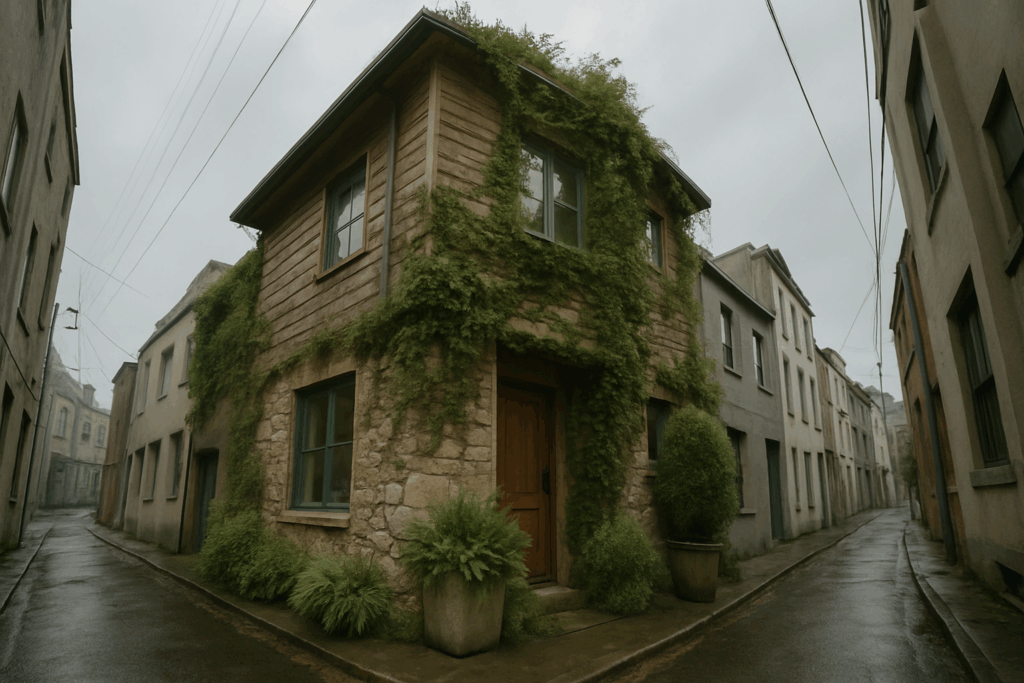What Is Biophilic Design, Really?
Biophilic design is about making your home feel more alive by reconnecting it with nature. No complicated jargon here—it simply means designing spaces that reflect natural environments in subtle, intentional ways. Think sunlight streaming through a window, the warm feel of wood under your hands, or the quiet presence of a leafy plant in the corner.
At its core, biophilic design involves three main principles: nature, light, and organic textures. That means letting natural elements into your space—literally, like plants and fresh air, and aesthetically, through earthy tones, uneven surfaces, and materials that feel raw and real. It’s also about giving light room to move, shaping places that feel open, breathable, and responsive to the time of day.
But here’s the thing: this isn’t some seasonal design fad. Biophilic design is a way of thinking about space and how it makes us feel—calmer, clearer, more rooted. It prioritizes human wellbeing over perfection. And in a world cluttered with screens and stress, that’s not just refreshing—it’s necessary.
The Science-Backed Benefits
Nature does more than look good—it actually changes how we feel and function. Studies show that exposure to natural elements indoors can reduce stress, sharpen focus, and even improve indoor air quality. It’s not just fluff. The presence of plants, natural light, and organic materials affects our nervous system—lower heart rates, calmer minds, and slower breathing. Offices with greenery report less absenteeism. Schools with natural light see better test scores.
Biophilic design taps into these effects. A home filled with greenery, sunlight, and breathable materials isn’t just nice—it actively supports mental clarity and emotional stability. One 2020 study in the International Journal of Environmental Research and Public Health found people in nature-inspired environments had lower cortisol levels. Another from Harvard linked indoor plant exposure with improved cognitive function.
This is the deeper meaning behind trending wooden tables and linen curtains. They aren’t just pretty—when chosen with intention, they interact with your well-being in measurable ways. Design can nudge you toward a better life. Nature helps carry the weight.
Easy Ways to Bring Nature Indoors
You don’t need a greenhouse or a full renovation to bring the outside in. A few smart choices go a long way.
Start with houseplants—specifically, the ones that won’t throw a tantrum if you forget to water them. Snake plant, pothos, and ZZ plant are solid picks. Low light? No problem. They’re low-maintenance, but still pull their weight when it comes to air quality and visual calm.
Materials matter too. Instead of synthetic everything, swap in wood, stone, or clay. A reclaimed wood shelf, a rough stone bowl, an unsealed clay vase—these textures ground a room instantly. The trick: don’t overdo it. One strong element per space does the job.
Use daylight like it’s part of your design. Place mirrors to bounce it deeper into rooms. Keep window areas open and uncluttered. Drop heavy drapes and go for sheer, light-filtering fabrics. The more your space reacts to sunshine, the more alive it feels.
And don’t forget other senses. A quiet space with purposeful sounds (like soft water from a small fountain or distant birdsong via ambient audio) can shift your mood fast. Same goes for natural scents—lavender sachets, cedar blocks, or beeswax candles. Keep it subtle. Aim for calm, not perfume counter.
Nature thrives on balance. So should your home.
Rethinking Decor: Fewer Things, More Meaning
Biophilic design isn’t about crowding your space with earthy trinkets. It’s about dialing things back. Less stuff, more purpose. Start by cutting clutter. If it doesn’t calm you or serve a real function, let it go. Wide, open surfaces and simple layouts invite the kind of ease that lets nature speak.
Next comes intention. Choose decor that feels grounded—pieces with organic curves, raw textures, and honest materials. Think hand-thrown pottery, linen with visible weave, or a driftwood bench that doesn’t try too hard. These are items that reflect nature without imitating it.
Upcycling fits this perfectly. Giving new life to old materials isn’t just practical—it deepens the story of your space. A reclaimed wood coffee table. Vintage glass turned into planters. It’s not about looking rustic; it’s about creating something meaningful and personal from what already exists.
For more ideas on how to turn cast-offs into accents with soul, check out Upcycle DIY: Repurposing for Unique Room Accents.
Realistic Design Ideas for Every Room
Biophilic design isn’t all or nothing. You don’t need a jungle in your hallway or a skylight in every room. Thoughtful changes in texture, color, and natural cues go a long way. Here’s what works in real spaces:
Living Room: Think of this as your landing zone for natural comfort. Paint one wall moss green or sage—it centers the space without overpowering. Raw finishes on tables or shelving—like unfinished wood or stone—bring in subtle natural texture. Open windows as much as possible; fresh air and shifting light do just as much heavy lifting as any object you buy.
Bedroom: Keep it light, soft, and breathable. Linen or cotton bedding in muted, earthy colors feels good and regulates temperature better than synthetics. Ditch clutter. Aim for a color palette that leans into soft blues, sandy beiges, or muted greens. Add one or two natural wood elements—nightstand, wall art frame, headboard.
Bathroom: You don’t need a spa budget to get a spa feel. Use materials like river stone or unpolished ceramic for small accent areas—sink surround, shower floor, shelf edges. Add a few subtle scent profiles: eucalyptus, lavender, or cedar in the form of soaps, oils, or shower bundles. Less is more here—one natural detail makes more impact than five synthetic ones.
Kitchen: This room gets the most traffic, so it should look alive. Build utility into your nature elements. Herb walls, even a small one-pot shelf garden, add color and function. Use wooden utensils, cutting boards, and bowls that show the grain. Try to let in light—swap heavy curtains for gauzy ones or nothing at all. Morning coffee just hits different with sun and fresh air.
These aren’t just upgrades—they’re reminders. That you’re part of the landscape, too.
Adapt It to Your Space
Not everyone has a giant sunroom and unlimited budget—but that doesn’t shut the door on biophilic design. In fact, small apartments might be the perfect proving ground for low-key, high-impact nature vibes.
Start simple. Even a single plant in the right spot changes the mood of a room. If natural light is limited, go for low-light champions like snake plants or pothos. Add one or two natural material pieces—maybe a wooden stool, a jute rug, or linen curtains. The goal isn’t to clutter with greenery, but to introduce texture, life, and calm.
Biophilic minimalism is your friend. Think fewer objects, but ones that breathe. A ceramic bowl with stones from your last hike. A driftwood piece on a table. Leave space between things so your eye—and your mind—can rest. This isn’t about perfection. It’s about feeling more grounded in your space.
You don’t need to spend big, either. You can DIY a vertical herb wall for the kitchen or repurpose an old ladder into a plant display. Keep it steady. Every small upgrade adds up. And every time you open the window or move a chair toward the light, you’re letting nature back in.
Final Takeaway: Make Nature Part of Your Everyday
Biophilic design isn’t about trying to turn your living room into a forest. It’s about creating small, meaningful connections between your space and the natural world. Think less copy-paste from the outdoors, more subtle reminders that life exists beyond four walls.
Start with what feels manageable. One plant. A woven rug. A better view of the sky. You don’t need a full home renovation. Just a few conscious choices that add nature’s rhythm to your space. Over time, these small shifts build into something more grounding.
Most importantly, design isn’t just about looks. A shelf of dried herbs might lift your mood more than a trendy lamp. A patch of sunlight may do more for your focus than any productivity hack. Every space should support how you feel—not just how it photographs.


 Home & Interior Design Specialist
Home & Interior Design Specialist
